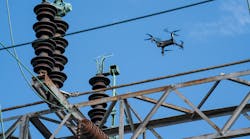An innovative High Temperature Superconducting (HTS) power cable system was launched at American Electric Power's Bixby Station outside of Columbus, Ohio, beginning a two-year test of a new HTS cable design that holds promise for lowering the costs of HTS cable and helping address concerns about growing electricity demands in an increasing number of cities.
Over the next two years, 200 m (approx. 660 ft) of new Triax HTS cable will deliver more than 50 MW of electricity to approximately 8,600 industrial, commercial and residential customers served by AEP's Bixby Station in Groveport, Ohio. The new Triax cable was developed by Southwire and nkt cables, a European cable company, in an effort to lower the costs of HTS cable and bring it closer to commercial application. Partners in the Bixby demonstration of the cable include Southwire, nkt cables, AEP, American Superconductor, Praxair, the Department of Energy and its Oak Ridge Laboratory.
"Over the last century, AEP has led our industry in bringing power generation, transmission and distribution innovations out from the research lab into real-world application. The demonstration of this new high- temperature superconducting cable at our Bixby Station is another example of how we are constantly seeking to advance technologies that could increase the capacity of and ensure the reliability of our power delivery network," said Carl English, president, AEP Utilities. "Over the next two years, this project will provide an invaluable demonstration of state-of-the-art superconducting cable technology on an operating power distribution system."
Superconducting cables, operating at extremely low temperatures, eliminate virtually all resistance to the flow of electric current. HTS cables can deliver up to five times more electricity than traditional conventional copper or aluminum cables and have the potential to address the challenge of providing sufficient electricity to densely populated areas. In an increasing number of cities, there is little room to expand underground cable networks and the cost to lay additional cable, including building new tunnels or ducts, is prohibitive. With their higher capacity, superconducting cables have the potential to increase the supply of electricity to an area using the existing underground cable footprint. Additionally, because HTS cables can carry more current at a lower voltage over longer distances, large power transformers could be located farther from urban centers and densely populated areas freeing up valuable real estate for development or green space.
"Superconducting cables have the potential to increase efficiencies in the delivery of electric power in the same way that an expressway can handle more traffic than a typical city street," said Stuart Thorn, president and chief executive officer of Southwire. "The Triax cable design is a major step forward, and we are excited to demonstrate its potential for delivering more power to more people."
The Triax cable places the three necessary phase conductors concentrically around a common central core, surrounded by a copper shield. Earlier designs required a separate cable for each phase. The more compact Triax design reduces by half the quantity of HTS wire needed. It also reduces the cold surface area, and with it the critical cooling requirements. Both of these innovations lower the cost of HTS systems.
"The Columbus project drew on our expertise in the practical application of cryogenic refrigeration solutions," said Steven Lerner, senior vice president and chief technology officer at Praxair. "The proprietary system has a unique level of redundancy to assure uninterrupted, lower-loss electric power transmission."
"2006 will undoubtedly go down in history as the year in which high temperature superconductor technology started to deliver on its long held promise," said Greg Yurek, CEO of American Superconductor. "We are witnessing the birth of a new era for the world's utility grids and taking one of the first steps in meeting our growing appetite for electric power."
Although the benefits of superconducting cables have been proven, the cost of the technology has been too high for commercial application. The new Triax HTS cable design being demonstrated at Bixby cuts the costs of HTS by reducing the quantity of HTS wire needed for the cable and also requires less extreme cooling. Although called high-temperature, this HTS system operates at temperatures just below the boiling point of liquid nitrogen (-321 degrees Fahrenheit).
Tests of the new Triax cable have verified its reliability; however, AEP will be able to automatically switch electricity delivery back to the pre-exiting system at Bixby Station to ensure continued electrical service for customers if the new Triax HTS cable system experiences any problems.

